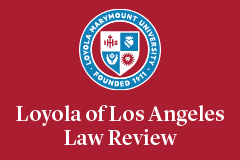Abstract
In Arizona v. United States, the Supreme Court held that three of the four challenged provisions to Arizona’s “Support Our Law Enforcement and Safe Neighborhoods Act” were preempted. The Court reached this conclusion by focusing on the federal government’s supremacy in immigration enforcement. Ironically, the Court’s focus on federal supremacy undermines the executive branch’s central enforcement measure for obtaining custody of suspected immigration violators: immigration detainers.
The executive branch issues over a quarter million immigration detainers each year to state and local law officials. These detainers command state and local officials to hold a prisoner, who would otherwise be released, in custody awaiting pickup by federal immigration officials. This Article examines the immigration detainer program under the analytical framework provided by the Court’s Arizona decision. This Article proceeds by first describing the Arizona decision and its underlying analytical framework. It then analyzes immigration detainers within this framework, concluding that the federal immigration detainer regulation is ultra vires and raises substantial constitutional questions. Ultimately, this Article shows that the Arizona decision will have significant impact on immigration enforcement beyond the question of allocation of enforcement authority between the federal government and state and local governments.
Recommended Citation
Christopher N. Lasch,
Federal Immigration Detainers After Arizona v. United States,
46 Loy. L.A. L. Rev. 629
(2013).
Available at: https://digitalcommons.lmu.edu/llr/vol46/iss2/25


